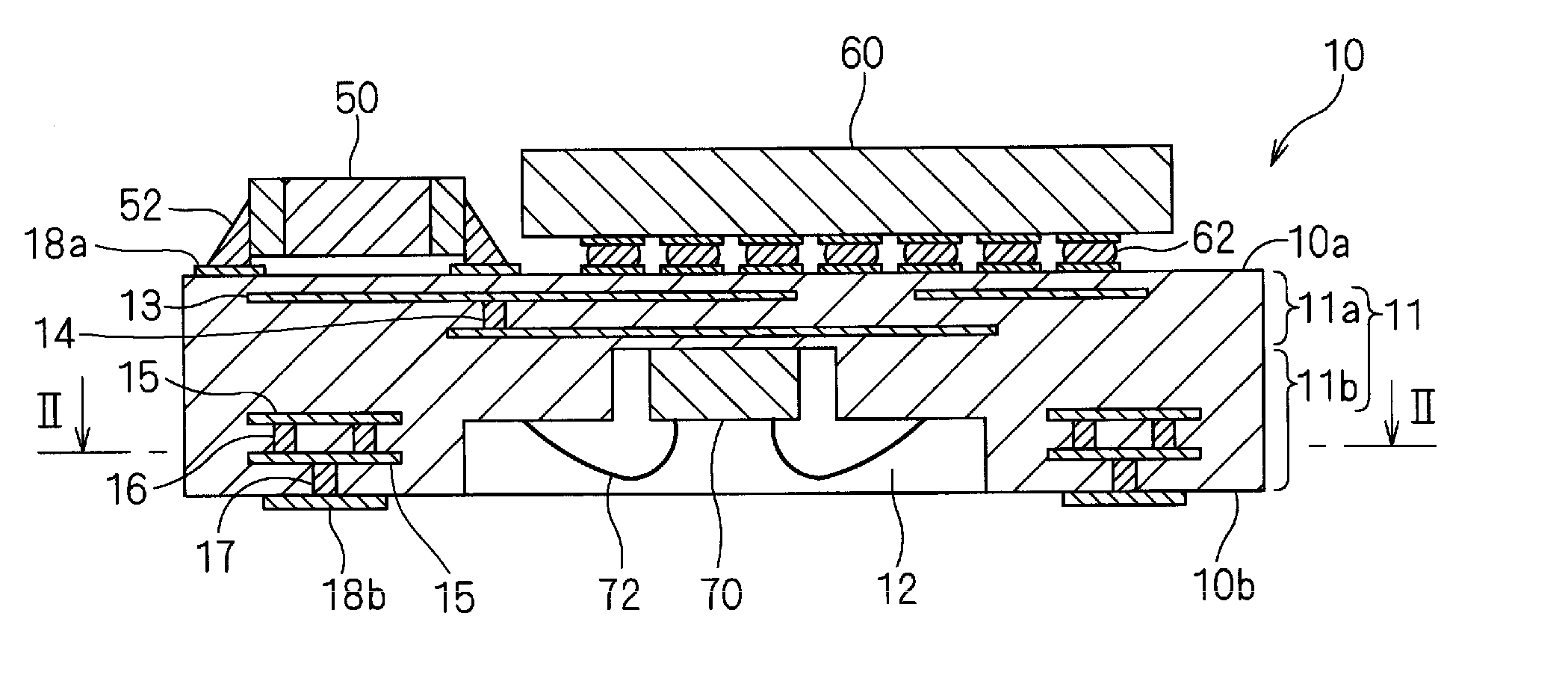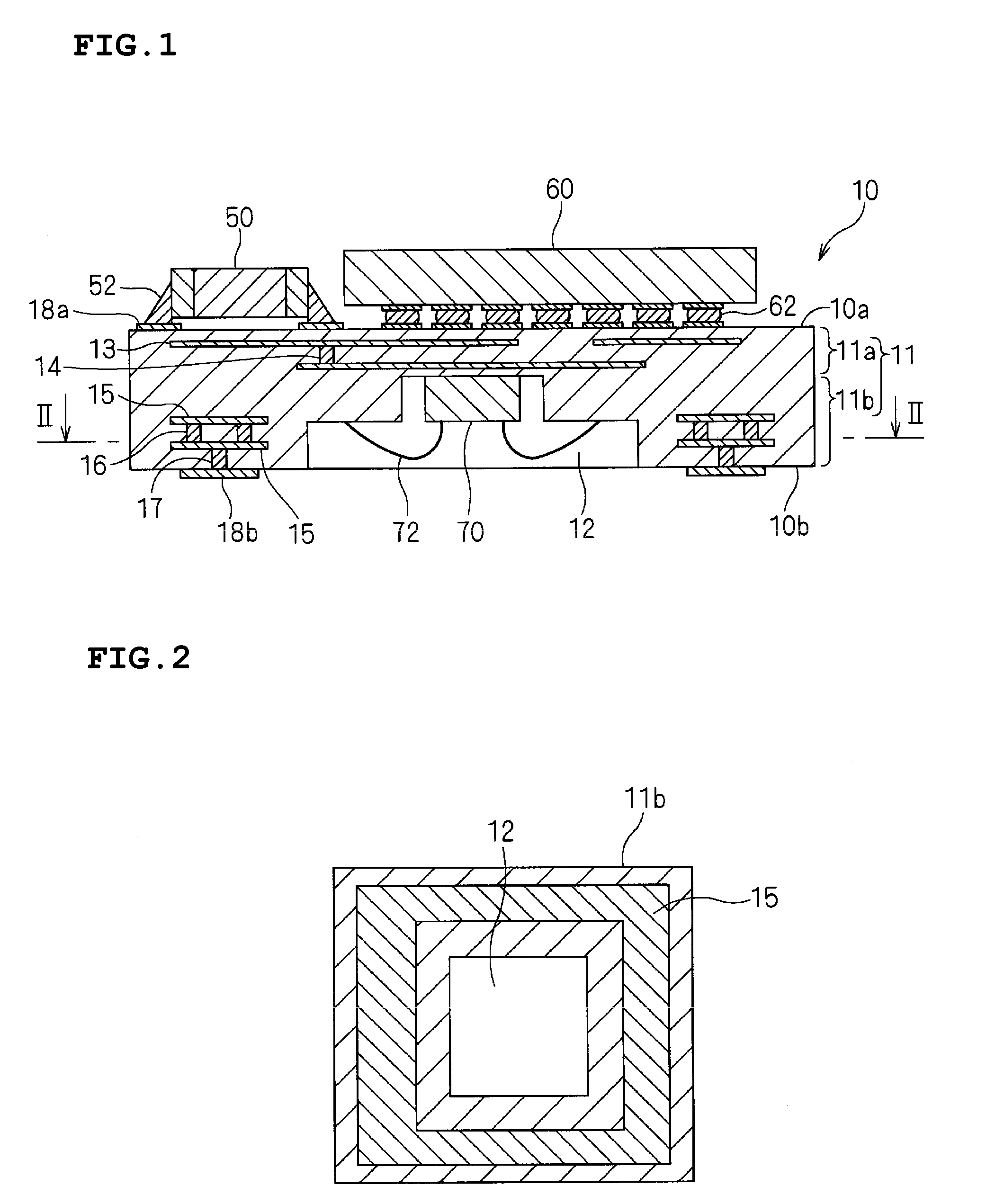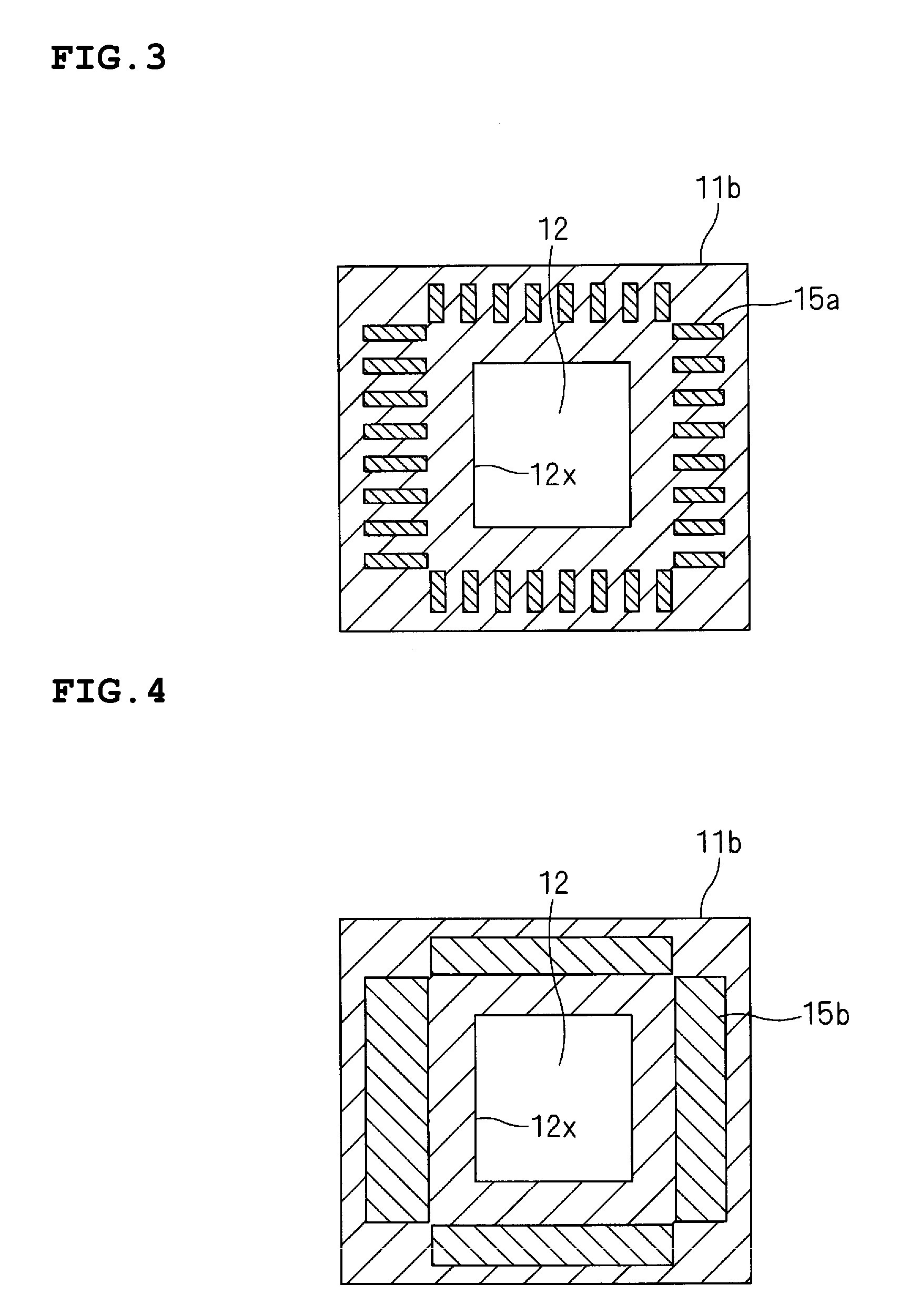Ceramic multilayer substrate
a multi-layer substrate and ceramic technology, applied in the direction of printed circuit stress/warp reduction, printed circuit details, non-printed electric components of printed circuits, etc., can solve the problems of cracking at the bottom end of the cavity and deformation, difficult to reduce manufacturing costs, so as to prevent non-uniform deformation
- Summary
- Abstract
- Description
- Claims
- Application Information
AI Technical Summary
Benefits of technology
Problems solved by technology
Method used
Image
Examples
first preferred embodiment
[0056] A ceramic multilayer substrate 10 according to a first preferred embodiment will be described below with reference to FIGS. 1 to 5.
[0057] As illustrated in the cross-sectional view of FIG. 1, a main body 11 of the ceramic multilayer substrate 10 includes a planar base plate portion 11a and a cavity surrounding portion 11b which defines a cavity 12 disposed in the center of the main body 11. The ceramic multilayer substrate 10 is formed by stacking and firing a plurality of ceramic green sheet layers.
[0058] Within the main body 11, an in-plane conductor 13 disposed between ceramic green sheets, a via hole conductor 14 with which a through-hole (via) passing through the ceramic green sheets is filled, and other components define an internal electrode pattern, which defines a portion of a built-in circuit. Examples of the internal electrode pattern include a pattern of a passive element, such as a capacitor or an inductor, a ground pattern, and a wiring pattern for interconnec...
second preferred embodiment
[0082] A ceramic multilayer substrate 20 according to a second preferred embodiment will be described below with reference to FIG. 6.
[0083] The ceramic multilayer substrate 20 has substantially the same inner structure as the ceramic multilayer substrate 10 according to the first preferred embodiment.
[0084] As illustrated in FIG. 6, the ceramic multilayer substrate 20 differs from the ceramic multilayer substrate 10 according to the first preferred embodiment in that, in addition to terminal electrodes 28, surface patterns 26a and 26b are provided on a main surface 20b on a cavity 22 side and that the cavity 22 has a substantially square opening and the main surface 20b of the ceramic multilayer substrate 20 is substantially rectangular and has long sides and short sides.
[0085] When a plurality of terminal electrodes 28 are arranged in a line on the periphery of the main surface 20b, there is space between the opening and short sides 20s (in a direction of long sides 20t) on the ...
third preferred embodiment
[0088]FIG. 7A is an exploded perspective view of a ceramic multilayer substrate according to a third preferred embodiment. FIG. 7B is an assembly cross-sectional view taken along line b-b of FIG. 7A. In FIG. 7A, a signal line is omitted.
[0089] The ceramic multilayer substrate according to the third preferred embodiment includes laminated ceramic layers 110, 120, and 130 disposed on a planar base plate portion 100. The laminated ceramic layers 110, 120, and 130 have openings 112, 122, and 132, which define a cavity 162.
[0090] The ceramic layers 110 and 130, which are the first layer and the third layer from the base plate portion 100, include deformation preventing patterns 114 and 134. The deformation preventing patterns 114 and 134 are provided on a pair of sides facing each other across the openings 112 and 132 (left and right sides in FIG. 7A). As illustrated in FIG. 7B, the deformation preventing patterns 114 and 134 are connected to each other via interlayer connection conduc...
PUM
| Property | Measurement | Unit |
|---|---|---|
| temperature | aaaaa | aaaaa |
| temperature | aaaaa | aaaaa |
| temperature | aaaaa | aaaaa |
Abstract
Description
Claims
Application Information
 Login to View More
Login to View More - R&D
- Intellectual Property
- Life Sciences
- Materials
- Tech Scout
- Unparalleled Data Quality
- Higher Quality Content
- 60% Fewer Hallucinations
Browse by: Latest US Patents, China's latest patents, Technical Efficacy Thesaurus, Application Domain, Technology Topic, Popular Technical Reports.
© 2025 PatSnap. All rights reserved.Legal|Privacy policy|Modern Slavery Act Transparency Statement|Sitemap|About US| Contact US: help@patsnap.com



